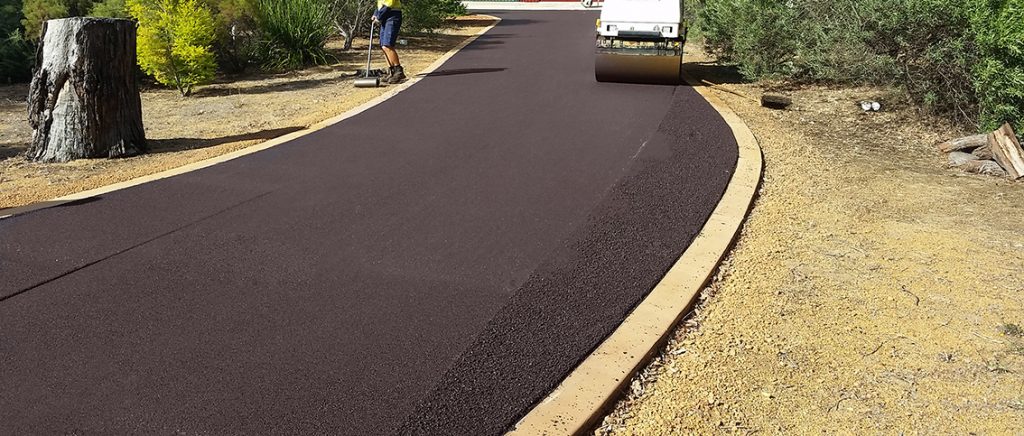Hot Mix Asphalt Paving: Redefining Industrial Home Landscapes
Hot Mix Asphalt Paving: Redefining Industrial Home Landscapes
Blog Article
Unlocking the Tricks of Warm Mix Asphalt Innovation
Discovering the midsts of warm mix asphalt modern technology uncovers a world where precise processes and precise formulations converge to shape our roadways and framework. The blend of accumulations, fillers, and binders isn't simply a building task but a tactical orchestration of resilience and efficiency. As we peer into the detailed dancing of elements, a tapestry of strength and sustainability unravels. What lies under this surface area of asphaltic mastery, and what keys wait to be introduced in the realm of paving technologies?
Value of Hot Mix Asphalt
Hot Mix Asphalt plays an essential function in contemporary facilities growth due to its sturdiness and cost-effectiveness. As the most frequently made use of leading product for roadways, freeways, and car park whole lots, Hot Mix Asphalt uses a variety of advantages that contribute to its value in building jobs.
The longevity of Hot Mix Asphalt stems from its composition, which consists of aggregates, binder, and filler materials that are thoroughly picked and mixed to fulfill particular performance demands. Generally, the value of Hot Mix Asphalt in facilities development can not be understated, as it proceeds to be a cornerstone of modern-day building techniques.
Parts of Asphalt Mixes
The composition of asphalt mixes includes meticulously selected accumulations, binder, and filler materials that are vital for achieving details performance demands. Accumulations are the key element of asphalt blends, offering toughness and stability. These aggregates can be all-natural, such as gravel or crushed rock, or synthetic, like recycled products from old pavements. The binder, commonly bitumen or asphalt concrete, holds the accumulations together and offers adaptability and resilience to the mix. The choice of the binder is crucial as it directly influences the mix's performance in different climate condition. Fillers, such as hydrated lime or Portland concrete, are made use of to boost the mix's workability and aging resistance. Angled Parking.
The combination and proportion of these components play a significant role in identifying the high quality and performance of the asphalt mix. Engineers thoroughly create the mix to satisfy certain demands, thinking about aspects like web traffic volume, climate conditions, and sidewalk lifespan. Proper selection and balancing of aggregates, binder, and fillers are important for creating durable, resilient asphalt pavements.
Mixing and Production Methods

Once the accumulations are selected, the binder, frequently asphalt concrete, is included in bind the materials together. The binder's quality and quantity substantially influence the mix's versatility, resistance, and stamina to environmental aspects. In addition, fillers like moisturized lime or Portland concrete might be included to enhance particular features of the asphalt mix, such as its workability or dampness resistance.
During manufacturing, the accumulations and binder are heated, typically between 250-325 ° F(121-163 ° C ), to assist in blending and make certain proper layer of the aggregates. The blending process needs to be comprehensive to accomplish an uniform mix that advertises the wanted efficiency characteristics of the asphalt. Numerous strategies, such as batch blending or drum mixing, are employed to achieve premium and consistent asphalt blends for construction tasks.
Aspects Affecting Asphalt Efficiency
Aspects affecting asphalt performance include a variety of variables that influence the sturdiness, long life, and total quality of asphalt pavements. One crucial variable is the quality of materials utilized in the asphalt mix.

Environmental conditions also influence asphalt performance. Temperature level variants, moisture infiltration, and traffic lots can all affect the architectural integrity of the sidewalk. Layout considerations, such as sidewalk density and drain, navigate to these guys are crucial in guaranteeing the lasting efficiency of the asphalt pavement. By very carefully considering these contractors, elements and engineers can optimize asphalt performance and enhance the service life of pavements.
Lasting Practices in Asphalt Modern Technology

WMA enables for the production and placement of asphalt blends at reduced temperatures compared to conventional hot-mix asphalt, resulting in minimized power consumption and greenhouse gas emissions. The usage of porous asphalt mixes can aid mitigate stormwater overflow concerns by allowing water to infiltrate via the pavement and Bonuses into the ground, promoting all-natural water filtration and recharge procedures.
Verdict
Finally, warm mix asphalt technology plays an important function in contemporary framework growth as a result of its durability and cost-effectiveness. By thoroughly balancing components, employing proper mixing strategies, and considering various variables, engineers can create top quality asphalt mixes that endure rush hour loads and harsh climate problems. Accepting sustainable methods, such as using recycled materials and warm-mix technologies, additionally improves the environmental friendliness of asphalt modern technology.
Blending and production techniques in warm mix asphalt innovation involve the accurate mix and processing great site of accumulations, binder, and fillers to develop a high-performance and durable asphalt mix.Variables affecting asphalt performance incorporate a variety of variables that impact the resilience, longevity, and overall top quality of asphalt sidewalks. Sustainable techniques in asphalt innovation encompass different initiatives intended at decreasing the ecological effect of asphalt manufacturing and paving processes. By integrating recovered asphalt pavement (RAP) and recycled asphalt roof shingles (RAS) into brand-new asphalt blends, the market can significantly lower the consumption of raw products and energy, while likewise decreasing garbage dump waste.
WMA allows for the production and positioning of asphalt mixes at reduced temperature levels compared to typical hot-mix asphalt, resulting in decreased power consumption and greenhouse gas discharges.
Report this page